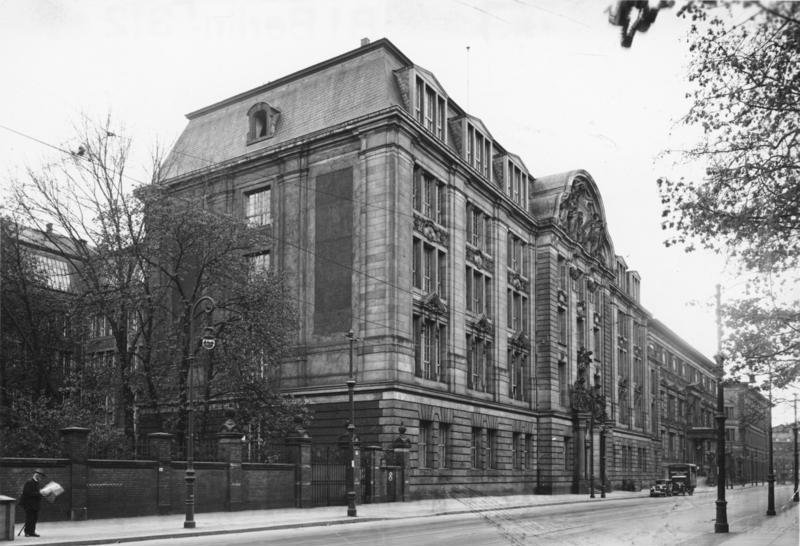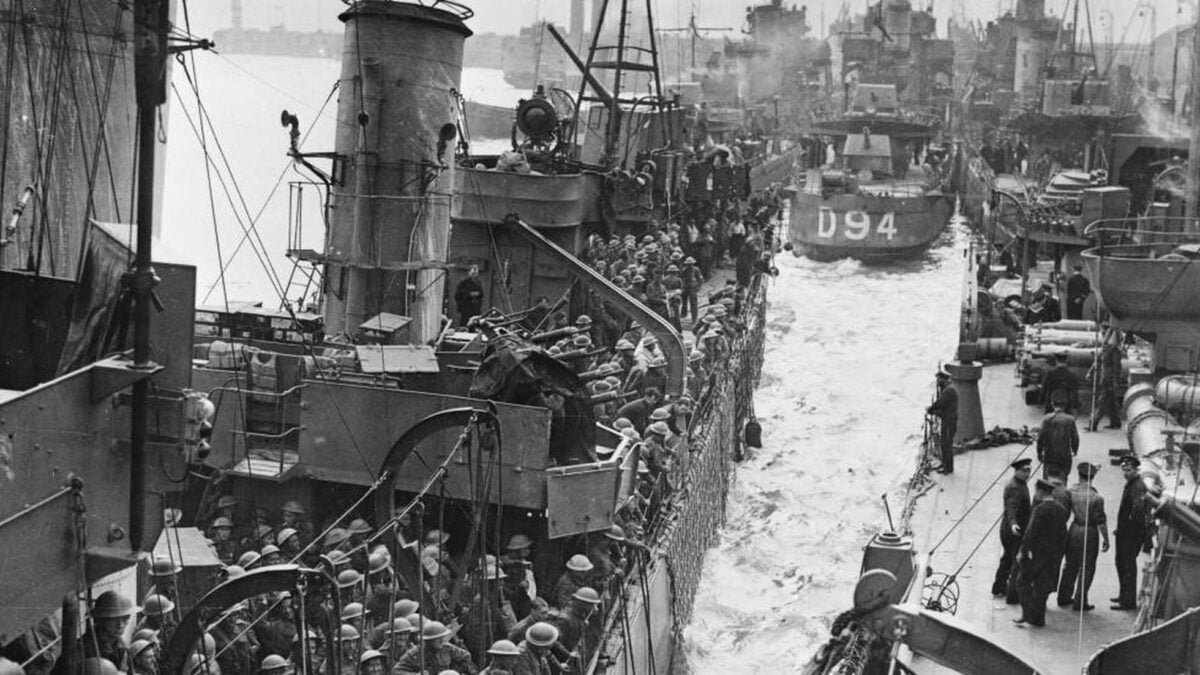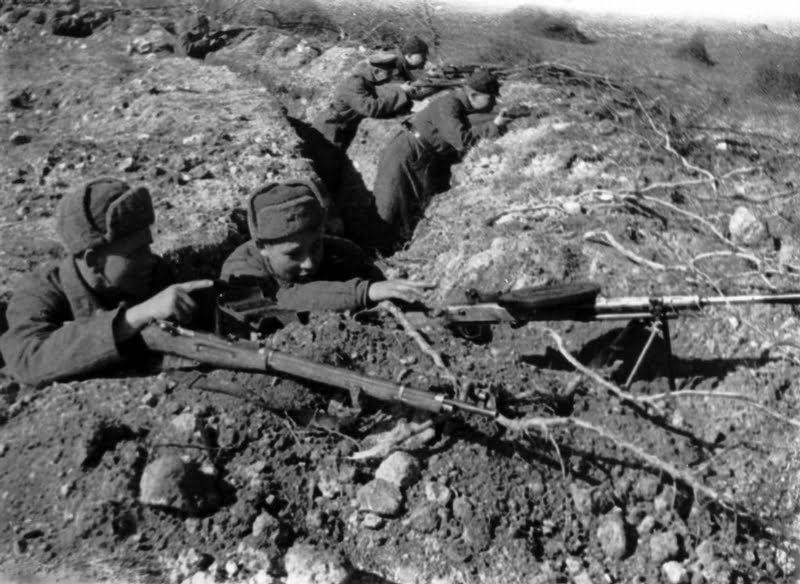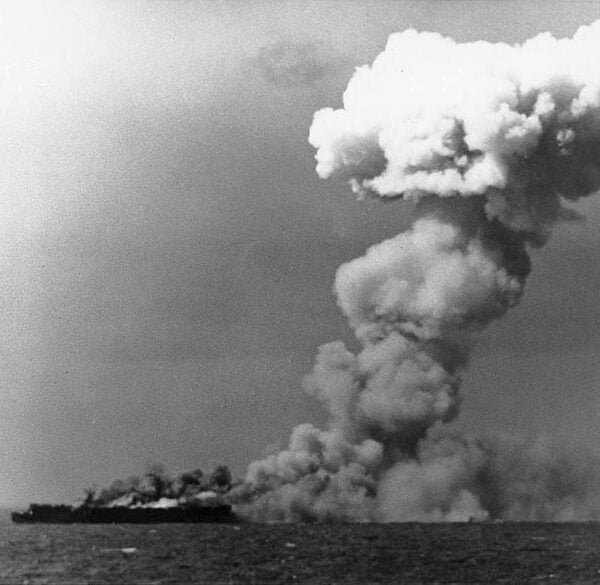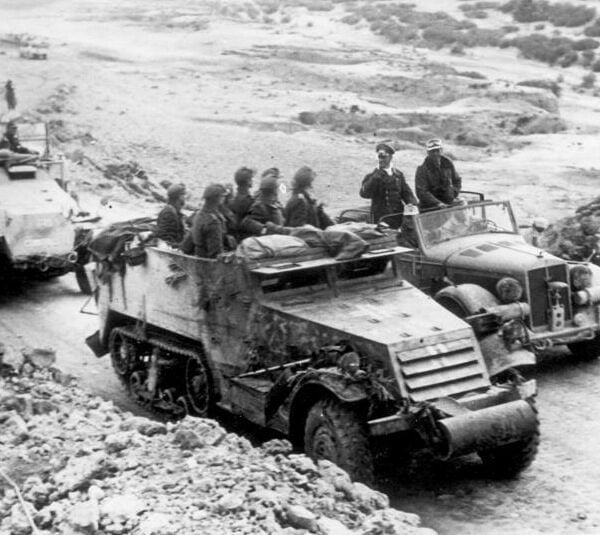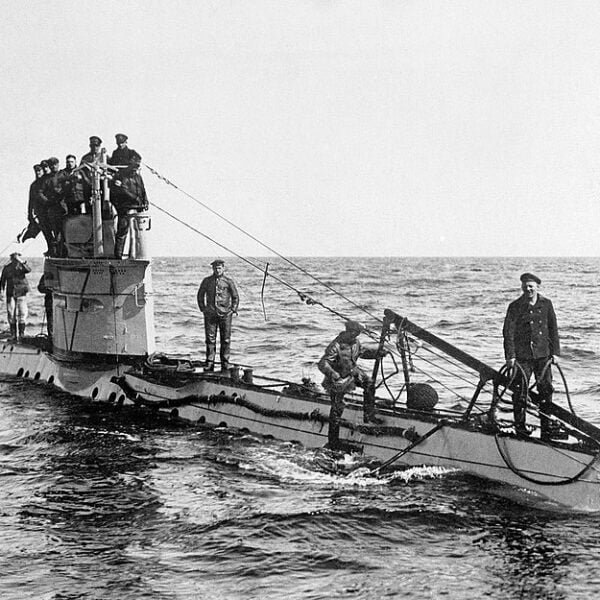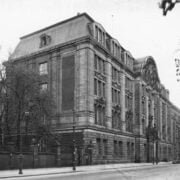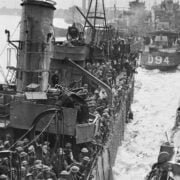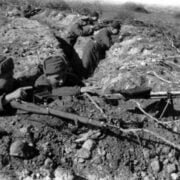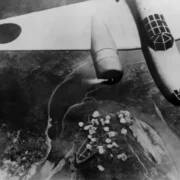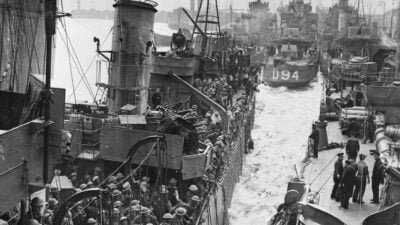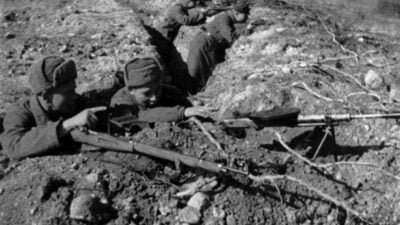The history of the Second World War is full of battles that shaped the course of the conflict. Among these crucial moments, the Battle of Montese stands out, an episode that took place during the Italian Campaign in 1945. Let’s explore the events that led to this battle and analyze its strategic and tactical implications.
Also check out: Battle of Leyte Gulf: The Greatest Naval Battle in History


In the history of the Second World War, the Italian Campaign represented a critical theater of operations, with Montese emerging as a crucial strategic point. In early 1945, the Allies sought to consolidate their advance in Europe, while German forces attempted to resist, taking advantage of the challenging geography of the mountainous region. The competition for Montese thus became a microcosm of the final strategies that would shape the outcome of the war.
Historical and Strategic Context of the Battle of Montese
The year 1945 marked a turning point in World War II, signaling the final phase of the global conflict. In this context, the Italian Campaign emerged as a crucial strategic front, where Allied forces sought to consolidate their advances, and Axis forces defended vital strategic lines. Montese, a small town in the mountainous region, gained prominence due to its strategic location, controlling crucial routes and providing a panoramic view of the surrounding area.
The geography of Italy, with its mountain ranges and rugged terrain, became a considerable challenge for both parties involved. The Allies, including the Brazilian Expeditionary Force (FEB), led by the United States, the United Kingdom, and other nations, aimed to break through German defensive lines to open a path towards the heart of Europe. On the other hand, German forces, facing increasing pressure from all sides, needed to strategically utilize natural resources and mountain defenses to halt the enemy’s advance.
Preparations and Force Positioning
Preparations for the Capture of Montese represented a crucial chapter in the narrative of the Italian Campaign. Even before the first shots were fired, both sides engaged in meticulous strategies to gain an advantage in that mountainous region. The Allied forces, led by a coalition of nations, initiated a series of in-depth reconnaissance missions, assessing geographical features, supply lines, and potential avenues of advance.
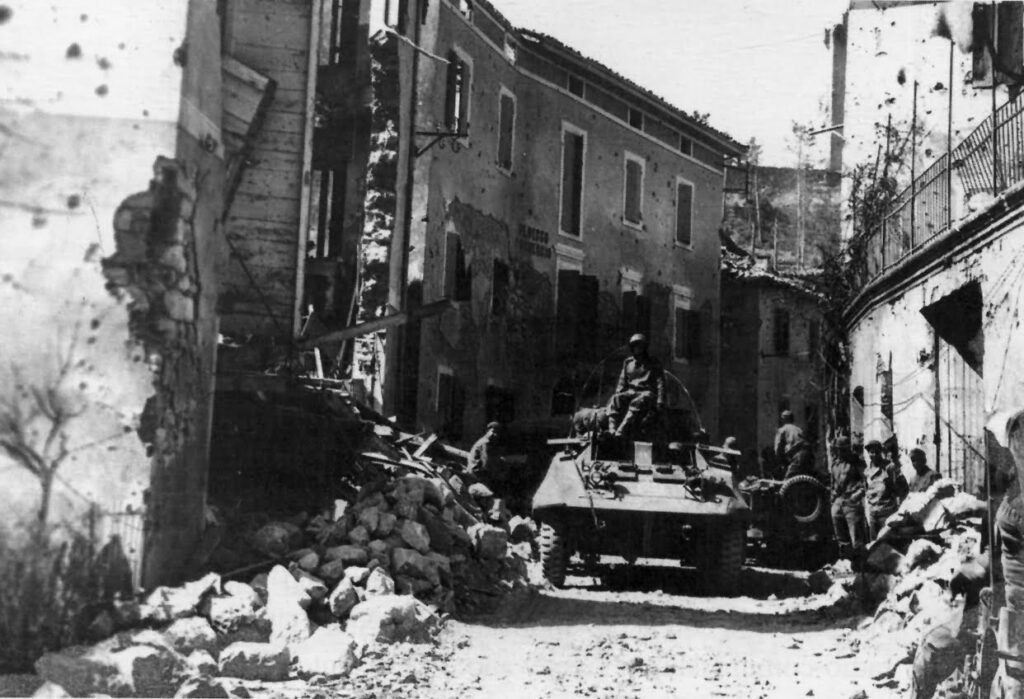

Aware of the terrain’s complexity, Allied troops adopted a multifaceted approach. Infantry, an essential element in the imminent urban battle, was supported by strategically positioned artillery units in areas providing clear lines of fire. Additionally, specialized units trained in mountain warfare were deployed to exploit tactical advantages in the elevations around Montese.
On the German side, the response was equally vigorous. Recognizing the strategic importance of Montese, defenses were reinforced with the construction of well-fortified bunkers and camouflaged trenches. Landmines were skillfully distributed to deter any unwary advance by Allied troops. The positioning of German forces reflected a keen understanding of the local geography, turning it into a formidable ally.
The Battlefield Scenario of Montese
The mountainous terrain posed significant logistical challenges for both sides. Narrow and winding roads were conducive to ambushes, requiring troops to be prepared to operate in an environment where mobility was often limited. Therefore, preparations extended beyond sheer military strength, involving careful considerations on how to overcome the challenges imposed by the terrain.
At a broader strategic level, Allied and German commanders anticipated the importance of controlling Montese not only as a key defensive position but also as a strategic observation point. The town offered a comprehensive view of the surrounding area, enabling efficient supervision of enemy movements. This detailed understanding of the terrain directly influenced the tactical plans of both parties, highlighting the interconnection between long-term strategy and immediate action on the battlefield.
As preparations progressed, frontlines became sharper, and the atmosphere around Montese became electrically charged with the impending confrontation. The early stages of the battle, therefore, were not just a clash of arms but a test of strategy, logistical ingenuity, and a profound understanding of the terrain, culminating in the meticulous implementation of plans conceived during strategic preparations.
Commencement of Combat and Development of the Battle of Montese
The onset of combat in Montese was marked by a deafening symphony of bombardments, artillery blasts, and the frenetic movement of troops on both sides of the conflict. This chaotic scene not only set the tone for the unfolding battle but also shed light on the intensity and ferocity with which Allied and German forces were willing to fight for this strategic point.


The initial hours of combat were characterized by a steady advance of Allied troops, facing determined resistance from German defenses. The narrow and winding streets of Montese, intended to provide a challenging battleground for invaders, became the stage for intense close-quarters combat. Every street, every building, became a point of resistance, transforming the city into a fortress that needed to be conquered inch by inch.
A Challenging Battle for Both Sides
The development of the battle revealed the inherent strategic complexities of urban conflict in mountainous terrain. Tactical advances were often followed by setbacks as troops attempted to navigate narrow streets while being targeted by well-prepared German forces. The city’s topography, with its alleys and lanes, created an environment where individual soldiers’ skills were as crucial as the overall strategies outlined by commanders.
The role of artillery support became even more evident as combat intensified. Buildings that previously offered shelter now became targets for precise bombardments, while infantry units sought to advance under a hail of enemy fire. These moments highlighted the need for coordination between different military branches, emphasizing that success in the Capture of Montese depended not only on the bravery of soldiers on the ground but also on strategic and precise support from other units.
Conflicts within Montese, often house-to-house, became a test not only of military skills but also of psychological resilience. Each advance was earned with sweat and blood, as German forces tenaciously defended every piece of ground. The unpredictable nature of urban warfare added a layer of uncertainty, where every corner could hide an ambush, and every building could become a strategic defense point.
Tactical Significance
The development of the battle in Montese highlighted the importance of tactical flexibility. Commanders, often facing crucial decisions in real-time, needed to adapt their strategies to overcome the constantly evolving German defenses. Initiative and the ability to think quickly became as crucial as pre-planned orders.
As days unfolded into weeks, the Capture of Montese evolved from a conventional battle into an extended test of endurance and strategy. Events within the city reflected not only a struggle for territory but also a battle for tactical and moral supremacy. The intensity of the fighting in Montese echoed not only in the surrounding hills but also in the pages of military history, leaving a legacy that transcended the specific geography of that small Italian town.
Role of Specialized Units
The role played by specialized units during the Capture of Montese emerged as a distinctive and decisive element in the complexity of the conflict. Highly trained and specialized troops were mobilized by both sides, revealing the importance of strategic adaptation and specific skills to deal with challenging mountainous terrain.
On the Allied side, mountain units played a crucial role. These soldiers, trained to operate efficiently in difficult terrain, scaled steep elevations and faced the hardships of mountainous conditions. Their ability to maneuver in areas previously considered inaccessible allowed Allied forces to surprise German defenses, reaching advantageous strategic positions.
Combat in Urban Environments
Furthermore, Allied specialized units demonstrated specific skills for urban combat. The capture of Montese involved clashes in narrow streets and squares, requiring not only conventional combat skills but also a deep understanding of the nuances of urban warfare. Allied mountain units, therefore, were not just soldiers trained for rugged terrain but adaptable warriors capable of facing the multifaceted challenges of urban mountain warfare.
On the German side, forces deployed their own specialized units to counter the Allied offensive. Troops experienced in specific defensive tactics for mountainous terrain proved resilient against enemy advances. Camouflage and ambush skills were employed masterfully, making each Allied advance a severe test of skill and determination.
The role of specialized units was particularly evident at strategic points around Montese. Steep elevations and narrow passages were transformed into battlefields where the specific training of these units stood out. In many cases, the effective positioning of these troops in difficult terrain allowed them to control the pace of combat and inflict heavy casualties on the enemy.
The Capture of Montese, therefore, provided a stage where military specialization became a key piece in the tactical puzzle. The mobility of Allied mountain units contrasted with the enhanced defensive ability of specialized German troops. This dynamic demonstrated how warfare in challenging terrain is not just a matter of numbers but a question of adaptive strategy and efficient deployment of available forces.
When considering the role of specialized units, it is essential to highlight not only their tactical importance but also the psychological impact of these troops. Their presence on the front lines not only influenced combat effectiveness but also played a vital role in troop morale. Confidence in the skills of specialized units reinforced the determination of both sides, while the success or failure of these units often defined the course of combat in Montese.
Command Strategies and Tactical Coordination
Success in the Capture of Montese was not only determined by bravery on the battlefield but also by the quality of command strategies and the effectiveness of tactical coordination among the diverse Allied units. This chapter will delve into the complexities of the adopted strategies and the dynamics of coordination, fundamental factors that directly influenced the outcome of this intense battle.
Allied commanders faced the challenge of coordinating a heterogeneous coalition of forces, consisting of troops from different nationalities, each with its own traditions and military tactics. The need to effectively integrate these diverse forces highlighted the importance of communication and clarity of objectives. Flexible strategies were essential, allowing quick adaptations to changes on the battlefield and the evolution of German tactics.
Efficient communication became a key piece in the tactical puzzle. Advanced radio systems, for the time, facilitated the transmission of orders and reports between units, enabling a rapid response to enemy maneuvers. The ability to synchronize attacks across different sectors of the battlefield provided a strategic advantage, undermining German defenses and keeping the initiative in the hands of Allied commanders.
The constant adaptation of command strategies was evident when dealing with the complexities of mountainous terrain. Commanders understood the need to exploit the tactical advantages offered by the elevations and canyons around Montese. Units were directed to strategic positions that allowed them to control the pace of the battles and provided opportunities for surprise attacks. This ability to take into account the specific characteristics of the terrain demonstrated a keen understanding of local geography and intelligent application of this information in strategy formulation.
Tactical coordination among different military branches was vital to overcome the challenges presented by the battle in Montese. Infantry advanced supported by artillery units, while cooperation with air forces offered a unique and strategic perspective of the battlefield. The ability to integrate ground, air, and artillery actions into synchronized operations was a testament to the skill of Allied commanders in optimizing available resources.
The flexibility of command strategies was especially evident during critical moments of the battle. The ability to quickly adjust pre-established plans based on real-time information was essential. This included the constant reassessment of the effectiveness of tactics used, the redirection of troops to areas of increasing pressure, and the exploitation of tactical opportunities as they arose.
Allied commanders also understood the importance of maintaining troop morale during the most challenging moments. Psychological strategies, such as recognizing and celebrating tactical successes, were incorporated into overall strategies. This holistic approach not only boosted troop confidence but also contributed to a more cohesive and determined environment.
The contrast between Allied and German command strategies reflects the dynamism of the Capture of Montese. While German commanders faced significant challenges, they demonstrated remarkable ability in maintaining resilient defenses and exploiting the terrain to their advantage. German strategies emphasized creating significant obstacles, leveraging the unique characteristics of the terrain to maximize defensive effectiveness.
The detailed analysis of command strategies and tactical coordination during the Capture of Montese highlights not only the complexity of these aspects but also their critical interconnection. Success depended not only on sheer strength but on the ability of commanders to understand, adapt, and synchronize efficient strategies amid the chaos of war. Montese, thus, serves not only as a historical landmark but as a valuable study field for the challenges of leadership in complex conflicts.
Consequences and Legacy of the Battle of Montese
The Capture of Montese not only altered the course of the Italian Campaign but left a profound impact on the strategic and psychological narratives of Allied and German forces. The immediate consequences unfolded in a series of events that reverberated through the final months of World War II, shaping the destiny of Europe and outlining the legacy of this unique battle.


After the Allied victory in Montese, practical consequences were evident. The city, now under Allied control, represented a crucial strategic point, paving the way for subsequent advances in the Italian Campaign. German defensive lines were broken, and the morale of Allied troops reached its peak. Montese became more than a geographical position; it was a symbol of the resilience and determination that characterized the joint effort to defeat Axis forces.
For German forces, the loss of the Battle of Montese represented a significant strategic blow. Beyond territorial implications, confidence in German defenses was shaken, further weakening the Axis resistance capability at a crucial moment. The battle left visible scars on the morale of German troops, who now faced a series of setbacks across the Italian front.
The legacy of the Capture of Montese transcended the immediate events of World War II. The battle became a military case study, analyzed by strategists and historians interested in the complex dynamics of conflicts in challenging terrain. The lessons learned at Montese about the importance of tactical coordination, strategic adaptation, and the effectiveness of specialized units were incorporated into post-war military doctrines.
The psychological impact of the Capture of Montese was also enduring. The Allied victory reinforced the belief in the ability to overcome seemingly insurmountable obstacles. The stories of courage and tenacity in Montese became an integral part of the narrative of resistance and determination that characterized the Allied war effort.
Moreover, Montese highlighted the importance of terrain in conducting military operations. The battle was a practical lesson on how geography can shape and sometimes determine the course of a battle. Military strategists came to consider not only brute force but also adaptability to local conditions as critical elements in the development of victorious strategies.
The legacy of Montese extended beyond the pages of history books. The city, once a theater of war, became a symbol of resilience and overcoming. Monuments were erected to honor the fallen, and the lessons learned on those hills continued to influence military theory and strategic practice long after the end of World War II.
Ultimately, the Capture of Montese was not just a battle in a mountainous city; it was an episode that encapsulated the challenges and triumphs of war. Its legacy persists as a vivid reminder of the complexity of military strategy, the importance of adapting to variable terrain conditions, and the inherent resilience of the human spirit in the face of adversity.
